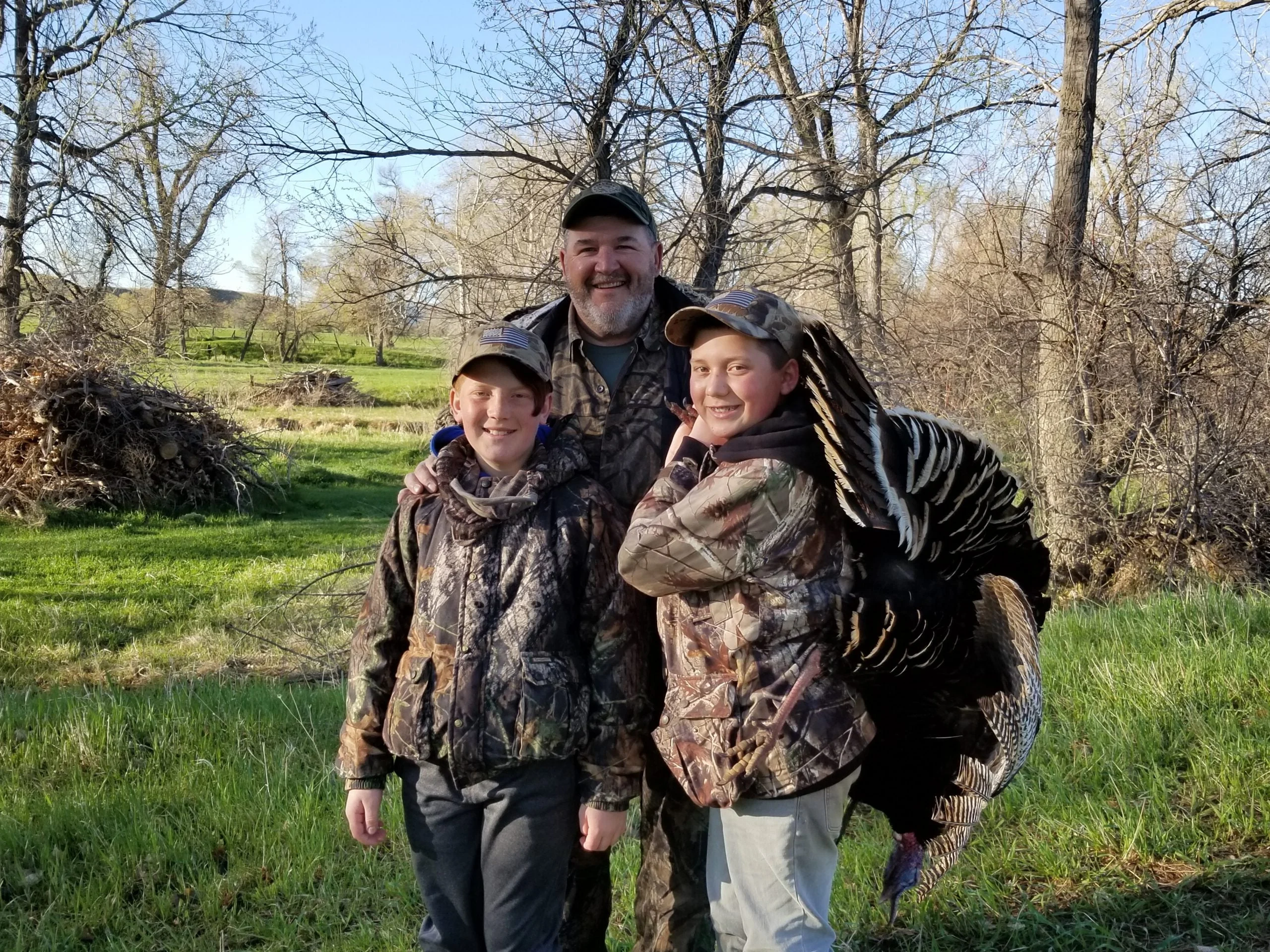Another year of spring turkey hunting is coming to a close, but if you’re lucky enough to hunt in one of the 16 states where the gobbler season runs through the end of May—and you still have a tag in your pocket—then it’s time to end the season with a bang on the final pick in our Best Day of the Strut
series, May 30th. We’ve got just the expert to help you get it done, too.
South Dakota guide Dave Ciani puts clients on birds from the April opener to the last legal opportunity. While some burnout can be expected after many early mornings, Ciani didn’t think twice when asked for his favorite time to chase Black Hills Merriams. Whether he still has clients or if he’s hunting for himself, Ciani says is he makes a point to get in the woods during the last few days of May. Here’s why he loves this timeframe and his advice for tagging a late-season tom.
**Related: Best Turkey Shoguns for 2024 Season
**
The Pro: Dave Ciani, South Dakota

South Dakota pro Dave Ciani, on a hunt with his grandsons Eli and Gannon Eklund. Dave Ciani
Dave Ciani has been guiding turkey hunters since 1978, and his High Prairie Lodge & Outfitters
in Spearish, S.D., is situated in some of the best Merriam’s turkey habitat in the country. Ciani is a former game warden who participated in some of the original trap-and-transfer programs that helped the wild turkey become one of modern conservation’s greatest success stories.
The Strut Stage: Post Peak Breeding
With most hens sitting on nests for much of the day, gobblers simply have to work harder to find willing mates by this time in the breeding cycle. Some toms will be starting to form bachelor groups that will see them through the summer and fall, but that doesn’t mean they’re ignoring any willing hens they hear. In fact, striking a gobbler now could actually mean you’ll be dealing with multiple toms heading your way. In Ciani’s area, immature hens may still be hanging with gobblers: “It seems Merriam’s are always flocked up to some degree,” he told F&S. “But by now, I think the few hens in those flocks are usually immature and not ready to breed. The toms seem to leave them pretty readily.”

Expect to find toms traveling in bachelor groups this late in the season. John Hafner Photography
Expert Tactic for May 30: Tag a Tom After a Storm
Ciania favors the late hunt for Merriam’s for several reasons. “There are fewer hunters out there, the weather tends to be nice and warm, and spring flowers are in full bloom,” he said. “It’s just a beautiful time to be out in the hills, and I find myself hunting for a pleasant experience as much as I am a tom willing to play the game. The best days are when those things coincide. In my experience, the best chances for that happening are right before and after a thunderstorm, which occur fairly frequently in late May here. Nothing gets a tom gobbling, especially late in the season, like some good rolling thunder!”
Though he won’t hunt during a storm, Ciani is out there as soon as the danger has passed. “A tom turkey will go from a wet, sloppy mess to a raving lunatic as soon as a storm rolls through,” he said. “I’m typically listening from a safe spot for gobbling, then I’m hustling into my rain gear and moving on the nearest tom I can find. I’ve noted that they’re typically in high meadows with wildflowers and cow flops. Turkeys have been on dry rations all winter and into spring, and by late May, they’re looking for dandelions, crocuses, bugs, even salamanders to eat. In those high pastures, they’re flipping over cow flops to find bugs and little green shoots. One of my favorite post-storm spots is a mountain meadow with a pretty creek that runs through the hills, and it greens up quickly. If I know there’s a tom in hearing distance of that spot, I’ll just settle in and call for a couple hours. More than once I’ve had a distant tom fire up, then break, and come running in like he hasn’t heard a hen in weeks.”
Ciani says you should hunt the last few days of May, if legal, whether you get a storm or not. Toms are often without hens now and are eager for company. But if you do get a storm, get your gear together and head out as soon as the rain stops—because those toms will doubly eager.
**Read Next: Best Turkey Calls for the 2024 Season
**


